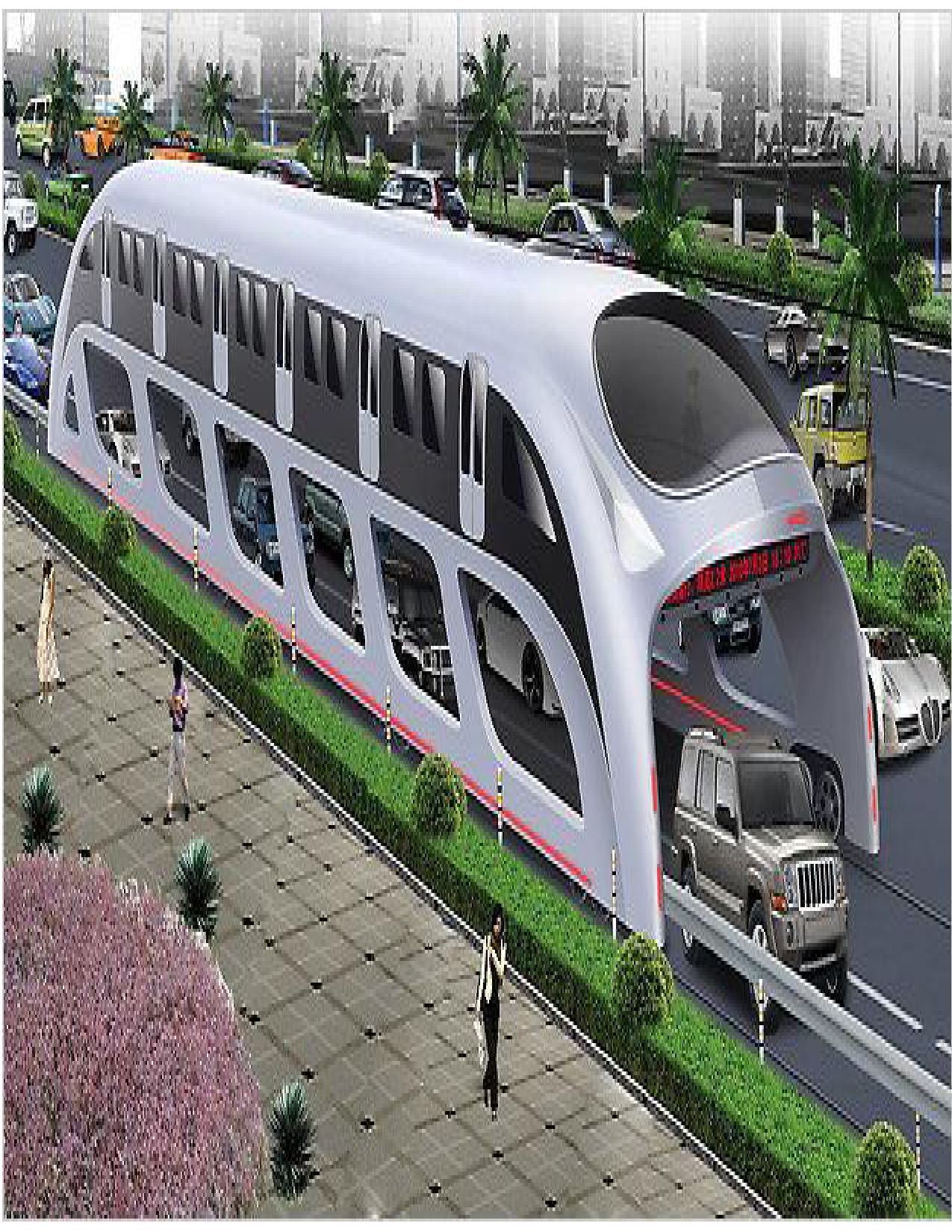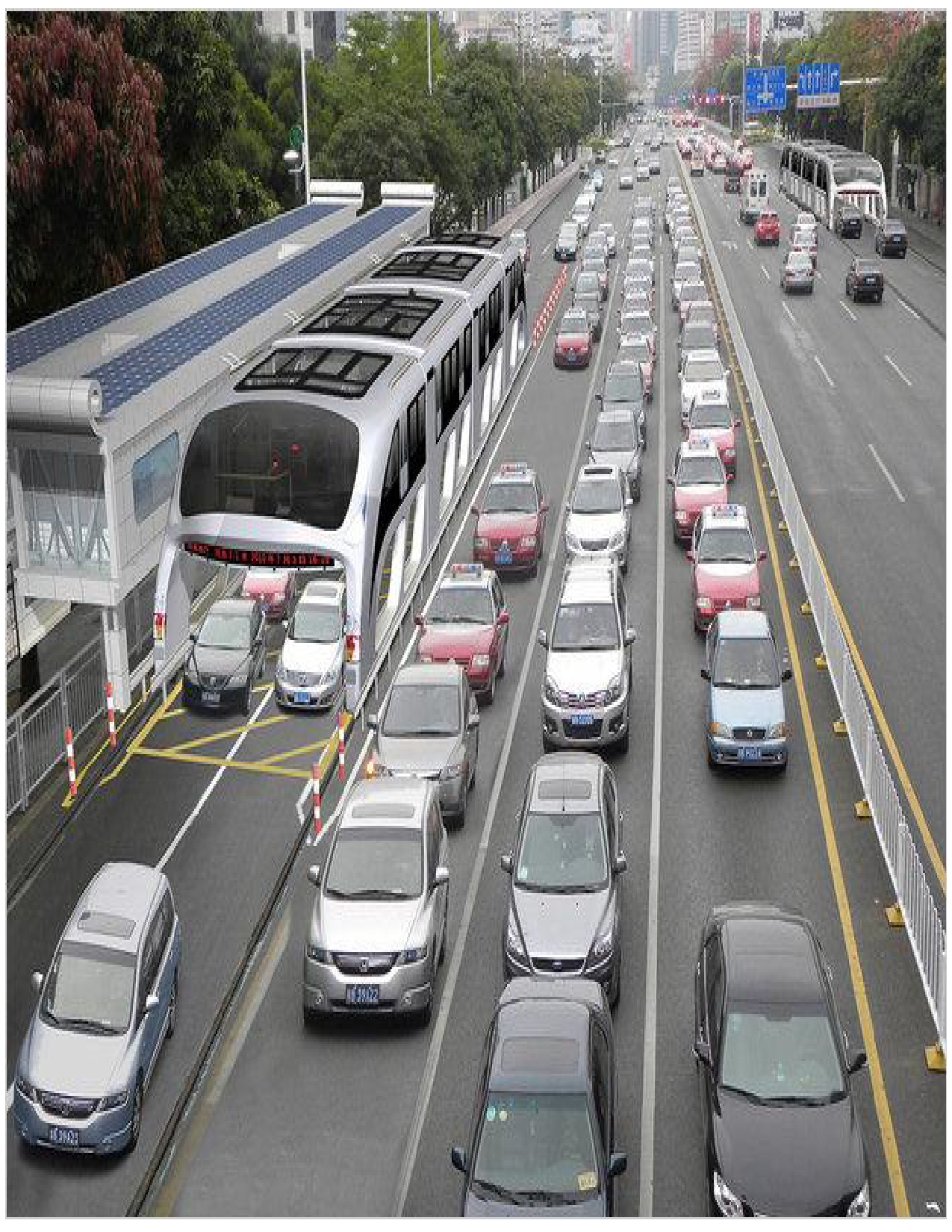“The Straddling Bus ”
August 7, 2013

Urban planners in China face a daunting task: they must create mass transportation systems that can handle unprecedented numbers of new urban inhabitants. It is expected that by the year 2015, more rural Chinese will move to their nation’s largest cities than the entire population of the United States,And at the same time, city planners must reduce China’s suffocating traffic and record-setting greenhouse gas emissions while saving money and construction time. Oh, and it wouldn’t hurt to impress the rest of the world with cutting-edge technology.
The Straddling Bus solution
To meet all of these urban mobility challenges, Youzhou Song developed the 3D Express Coach (nicknamed the “Straddling Bus”). The main compartment of these straddling buses is raised 4.5 meters off the ground and then the bus’s legs extend down to the road effectively straddling two lanes of traffic. As China’s middle class grows and her cities expand, cars have become the main status symbol and have clogged the roads. The straddling buses are designed to fill in the only remaining empty space: the space between the tops of the cars and the bottoms of the overpasses. The unique design allows cars to drive right underneath the elevated bus when it drives too slowly or when it stops to pick up passengers.
One new straddling bus with a capacity of 1200 to 1400 passengers could replace 40 traditional buses. The straddling buses are projected to not only reduce traffic by 20 to 30%, but also to save 2,640 tons of carbon emissions per year, since the straddling buses are completely battery powered. Furthermore, manufacturing the straddling buses and preparing the roadways cost one-tenth the price of building a new underground line and it can be completed in one-third of the time.

But all is not perfect
Although the straddling bus was met with widespread acclaim and named one of the top fifty inventions of the year by Time Magazine when the concept was first introduced in 2010 the concept of the straddling bus has now staled. The new buses were supposed to begin a trial run in 2010 in the Beijing district of Mentougou, but the district authorities refused to sign on until the prototype was proven successful. Critics of the straddling bus argue that the perfectly straight roads required for the buses could only be built in new areas and could not function in the already highly populated areas. They also stress that the straddling buses will just confuse drivers consequently increasing congestion. Furthermore, the gigantic overhead boarding areas cannot easily be constructed in densely populated areas. Finally, they recognize that the straddling bus is an innovative design project, but conclude that it cannot function in reality.
Consequences for urban and business mobility
espite these setbacks and criticisms the straddling bus is not yet defunct; the city of Manaus, Brazil has signed a letter of intent with the Chinese developers to create a straddling bus system. Such a practical application of the straddling bus will go a long way in determining the feasibility of such a daring proposal.
But more importantly, the concept behind the straddling bus should hopefully change the conversation in more transportation authority board rooms: while many cities’ transportation plans attempt to expand public transportation while limiting and discouraging private means, the straddling bus is built to integrate and improve both public and private systems. So, instead of merely trying to eliminate private transportation means like personal cars, maybe innovations should focus on harmonizing and improving both private and public transportation systems.
For more information about Urban-ITS, please visit www.metroinfrasys.com
Source: http://blo






